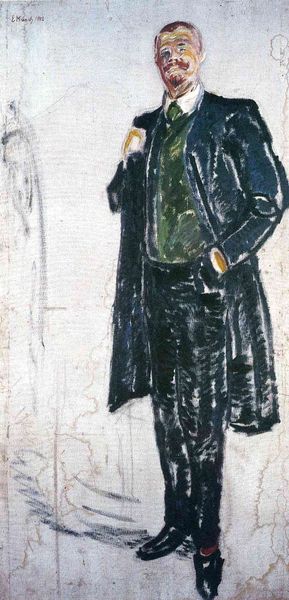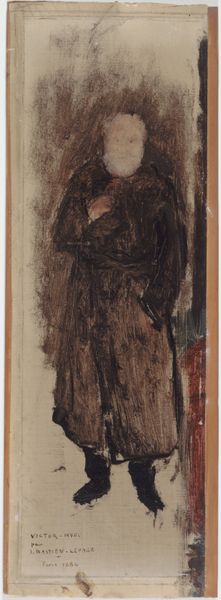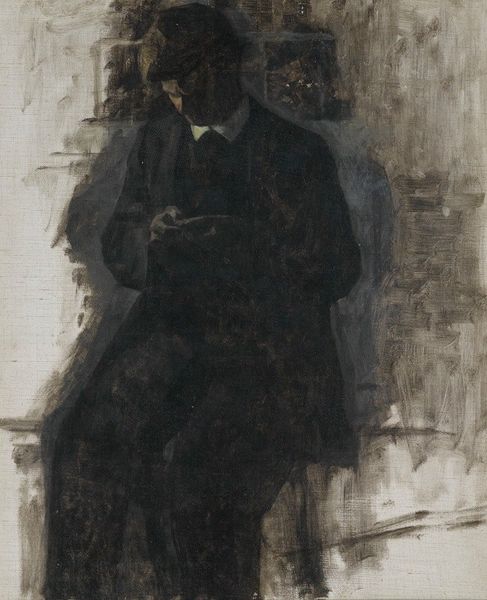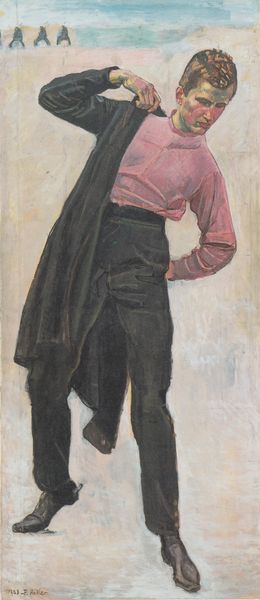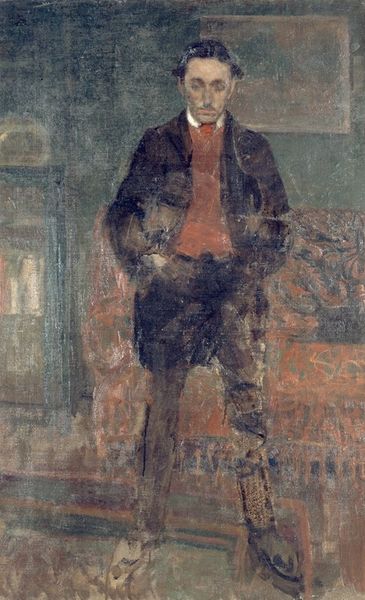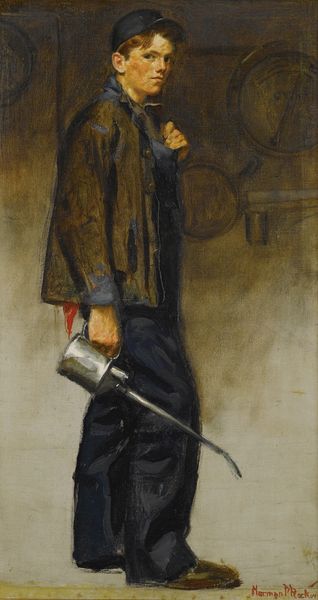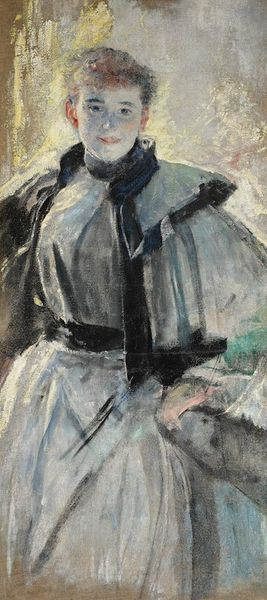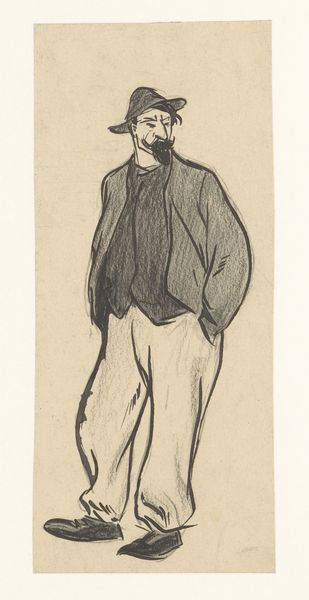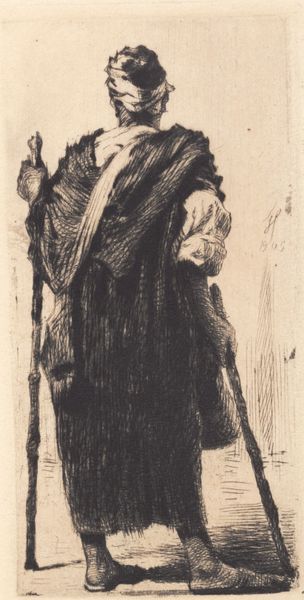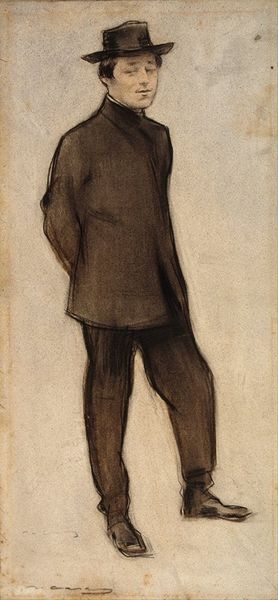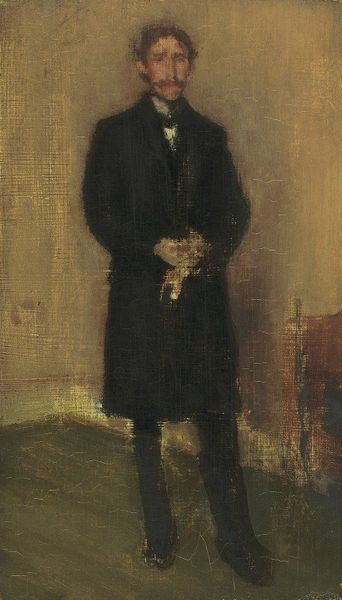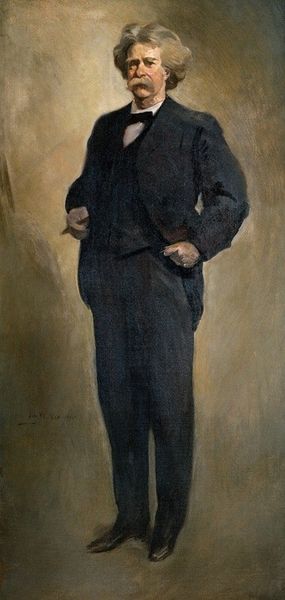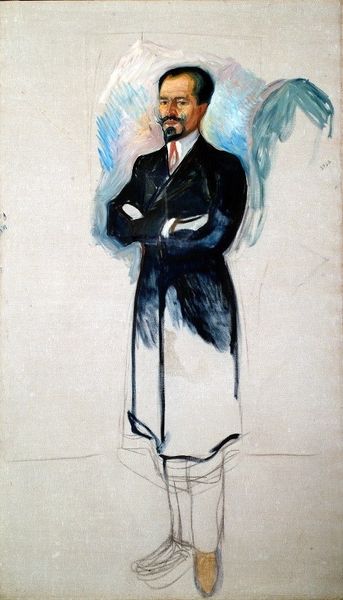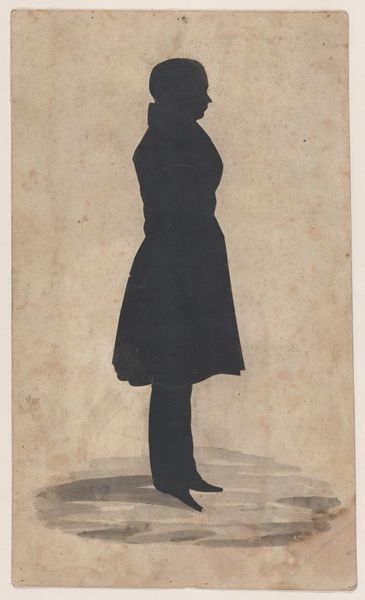
oil-paint
#
portrait
#
abstract painting
#
self-portrait
#
oil-paint
#
oil painting
#
underpainting
#
expressionism
#
painting painterly
#
monochrome
Copyright: Public domain
Editor: So here we have Richard Gerstl's "Ernst Diez I," painted in 1906 using oil paint. I am immediately struck by its raw, almost unfinished quality. What do you see in this piece? Curator: I'm drawn to the materiality. Look at the visible brushstrokes, the underpainting showing through. Gerstl isn't just depicting Diez; he’s showcasing the *making* of the image. Consider the availability of materials in 1906 Vienna – the industrial production of paints allowing for these intense, dark hues. Editor: Right, the black is incredibly dominant. What's the significance of using primarily dark tones, especially considering its an expressionist work? Curator: I think the color choice links directly to the social anxieties brewing at the time. It's Vienna on the brink of massive societal shifts. The heavy, almost suffocating black could symbolize the weight of tradition and the rigid social structures that Gerstl, as an Expressionist, was rebelling against. He even leaves areas of the canvas bare, forcing us to confront the physical reality of the support itself. It subverts our expectations of a traditional portrait. Editor: It almost feels like the painting is a commodity in itself; it represents an industrialization that clashes with Expressionism. What would be the impact on his audience? Curator: Absolutely. His audience would grapple with how industrial advancements were transforming art's means of production. In an early work such as this, we can infer his audience either saw his exploration into color as unappealing, or it may have revolutionized and been praised. I can argue there is also both inherent criticism, or inherent value depending on audience subjectivity, of mass-production depending on who may be the buyer, but it makes you wonder; was that his intention? Editor: That’s fascinating! I hadn't considered the painting as a commentary on the very act of painting itself, particularly given the context of mass production during that era. Thanks for sharing that insight! Curator: Of course! Thinking about art through its materials and context really opens up the conversation.
Comments
No comments
Be the first to comment and join the conversation on the ultimate creative platform.
